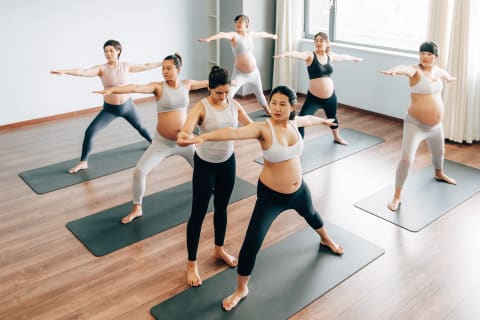Advertisement

As teachers, we often speak the desired actions for a yoga pose from a variety of perspectives: 1) how the pose feels in our own bodies; 2) how we've been taught; 3) the desired action we wish to see; 4) what we have found to be effective in the past. The words we use to describe each pose can range from simple to complex and can be based on sensation, anatomy or appearance of the body in the posture.
Often, students coming to your yoga classes are in a state of sensory overload. The constant stream of information we’re exposed to through radio, television and internet, and the challenges of our jobs and relationships can leave people exhausted and immune to hearing. Your job is to figure out how to cut through the chatter in their heads to seal the connection between what they hear and what you want them to do. So, for instance, when you say, “Bring your feet together,” you want to see them step the inner edges of their feet together. Try it in class this week; make that request and then look at your students. Notice the variation among students. Some of it might be due to anatomy; for some people standing with the feet completely together is uncomfortable. But for some, it’s because they aren’t listening. They may be looking around. They might be concerned about what’s going to come next. They’re self-conscious. They’re worried they won’t be able to keep up. They’re thinking they have to push themselves to get the most benefit out of the class.
Once you realize this, you see that the words you use are a prime opportunity to cut through the noise and help them take action. Some words are more effective than others in doing this while others work better at creating a sense relaxation in the practice.
The other factor that directly speaks to the idea of sensory overload is the need to speak clearly and succinctly. You can say, “Bring the inner edges of your feet together, feel the edges pressing and make sure they’re completely together,” or you can stay, “Bring your feet together.” As teachers, we often make a request and then repeat it in a variety of ways, either because we feel the need to keep speaking or we hope that in one version or another, it’ll hit the students correctly. But this conversational style can mimic what students are already getting in the rest of their life; that constant stream of information where nothing really sticks and its just background noise. Instead, try saying it once and look at your class. If the majority hasn’t taken the desired action, say it again. After that, move on.
For instance:
Words/Phrases to create Action
- Press, as in “press your palms”
- Squeeze, as in “squeeze your right thigh”
- Push, as in “push your thighs back”
- Reach, as in “reach up”
- Stretch, as in “stretch your legs forward”
- Lengthen, as in “lengthen your spine”
- Lift, as in “lift your leg”
- Open, as in “open your chest”
- Feel, as in “feel your body stretch”
Words that may be more challenging for students to understand:
- Rinse, as in “rinse your spine”
- Tilt, as in “tilt your tailbone forward”
- Tip, as in “tip forward”
- Wrap, as in “wrap your elbows in”
- Spiral, as in “spiral up through the crown of your head”
Words/Phrases to help relax and bring a sense of mindfulness to yoga:
- Soften, as in “soften your shoulders”
- Let go, as in “let go of your neck”
- Drop, as in “drop your head”
- Release, as in “release the tension in your body”
- Gaze, as in “gaze softly”
Language is an important piece of yoga teaching. But no one piece stands alone. The words you use, how you say them (tone, tempo, emphasis) and even how you use silence (i.e. what you don’t say) are all effective tools to use in your classes. The one piece that is always most important though, is to be yourself. Speak with your voice. It’s the most authentic way to build a connection with others.
